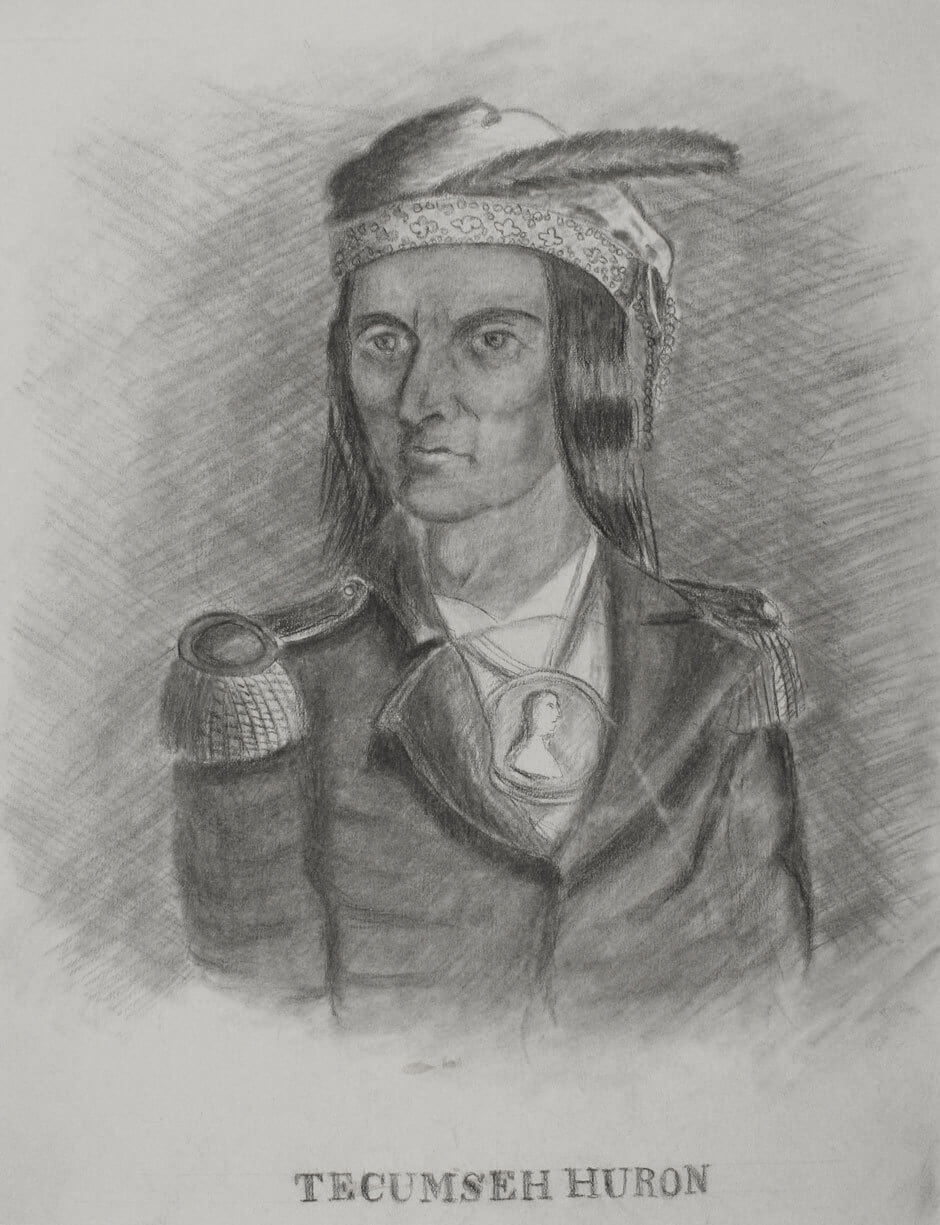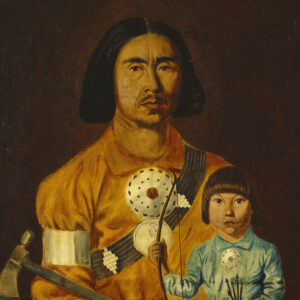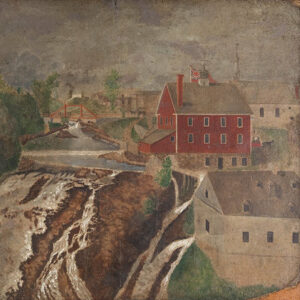Tecumseh, Huron n.d.

Zacharie Vincent, Tecumseh, Huron, n.d.
Charcoal on paper, 42.5 x 36.1 cm
Château Ramezay, Montreal
This charcoal drawing uses the fixed pose and tight framing of the self-portraits; it also presents problems, as in Zacharie Vincent and His Son Cyprien, c. 1851, of proportion and the relative size of the body parts, which here too have the effect of making the head and the ornaments stand out. Vincent probably found the inspiration for this drawing in the many portraits of Tecumseh (1768–1813) that were published throughout the nineteenth century, along with romantic fictional treatments and biographies. No portrait was made of Tecumseh during his lifetime, however, and this heroic character was not a Huron—the title of Vincent’s drawing notwithstanding—but a member of the Shawnee community from Ohio, a sister nation of the Wyandots that also came from Wendake and the Great Lakes, the historic Huron homeland.
Like Vincent, Tecumseh was a chief who played a diplomatic role, defending the interests of a Native federation. His fame rests on his campaign to persuade his people to abandon the practice of torture and on his resistance to the invasion and settling of Ohio.
The parallel between the two chiefs leads to another analogy: the identity of the “tragic hero” who experiences both triumph and adversity. Vincent here expresses his sense of identity with a heroic Native figure, apparently finding a significant kinship in the historical experiences and mythic stature of Tecumseh, just as he is said to have done with the Prince of Wales.
The feeling of solidarity and brotherhood among the communities of the Seven Nations was undoubtedly a contributing factor in Vincent’s homage to the Shawnee chief; another was the parallel he was able to draw between the fate of the Shawnee community and that of Jeune-Lorette, as Anne-Marie (Blouin) Sioui suggests:
Vincent’s revival of the figure of Tecumseh is interesting: it suggests that the artist felt a certain empathy with the famous chief, whose anxieties and destiny bore a resemblance to those of the Huron community in his village, who were themselves in the midst of an all-out struggle to keep or reclaim their territory and yet, at the same time, fought beside the British at such engagements as the Battle of the Chateauguay in 1813.

 About the Author
About the Author
 More Online Art Books
More Online Art Books
 Acknowledgements
Acknowledgements